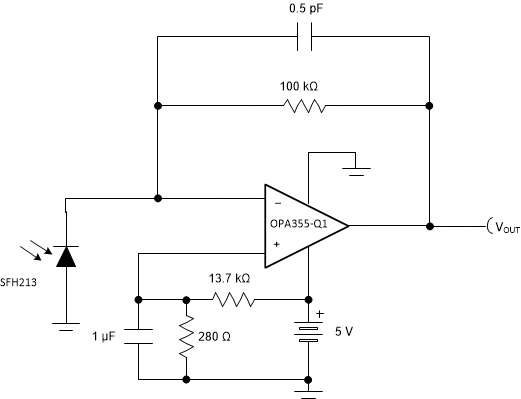ZHCSBR3C December 2013 – May 2018 OPA355-Q1
PRODUCTION DATA.
9.2.1.2 Detailed Design Procedure
To achieve a maximally-flat, second-order Butterworth frequency response, the feedback pole must be set to:

Use Equation 2 to calculate the bandwidth.

For other transimpedance bandwidths, consider the high-speed CMOS OPA380 (90-MHz GBW), OPA354 (100-MHz GBW), OPA300 (180-MHz GBW), OPA355 (200-MHz GBW), or OPA656 and OPA657 (400-MHz GBW).
For single-supply applications, the +INx input can be biased with a positive DC voltage to allow the output to reach true zero when the photodiode is not exposed to any light, and respond without the added delay that results from coming out of the negative rail; this configuration is shown in Figure 32. This bias voltage appears across the photodiode, providing a reverse bias for faster operation.
 Figure 32. Single-Supply Transimpedance Amplifier
Figure 32. Single-Supply Transimpedance Amplifier For additional information, see the Compensate Transimpedance Amplifiers Intuitively application bulletin.